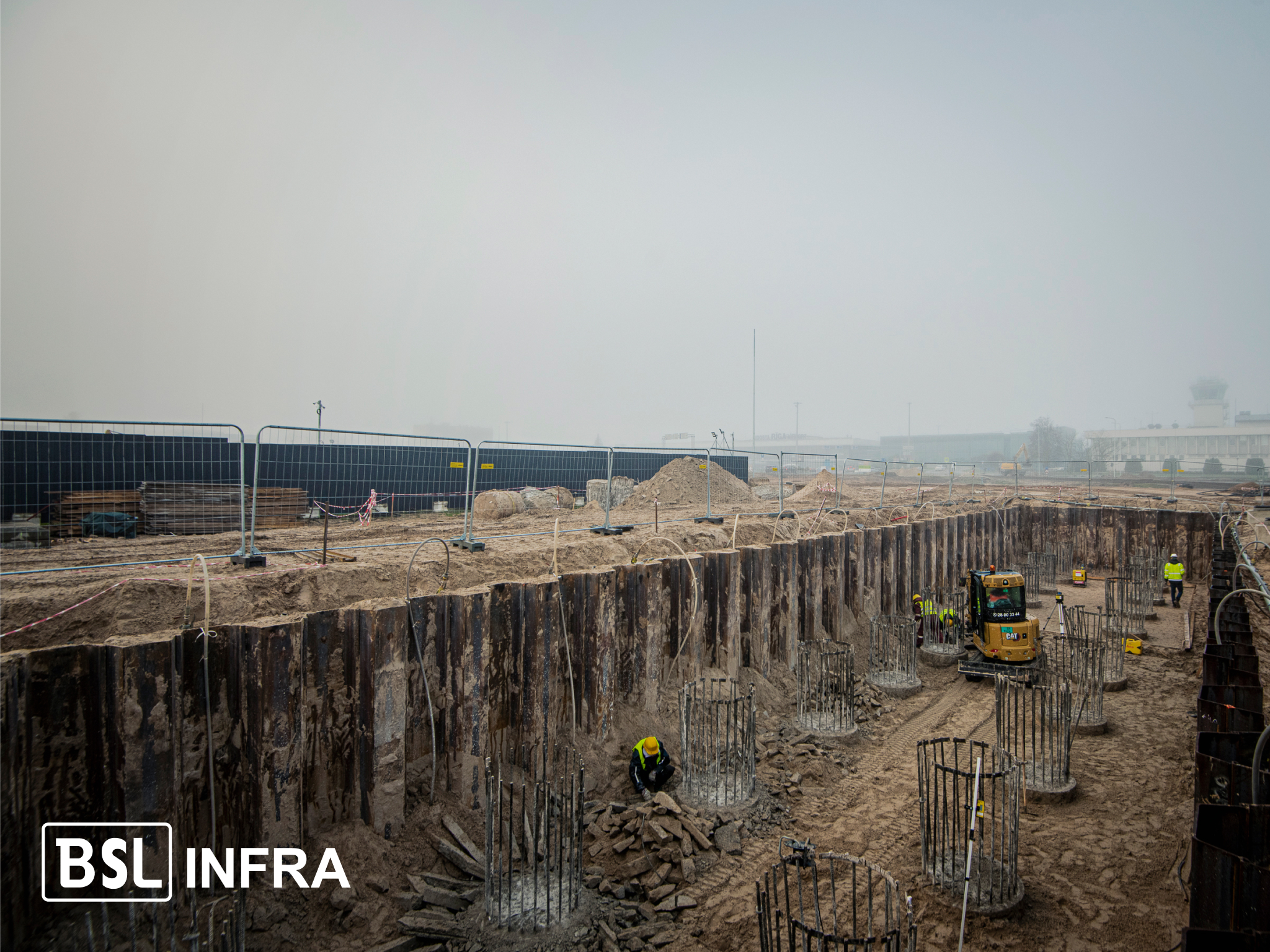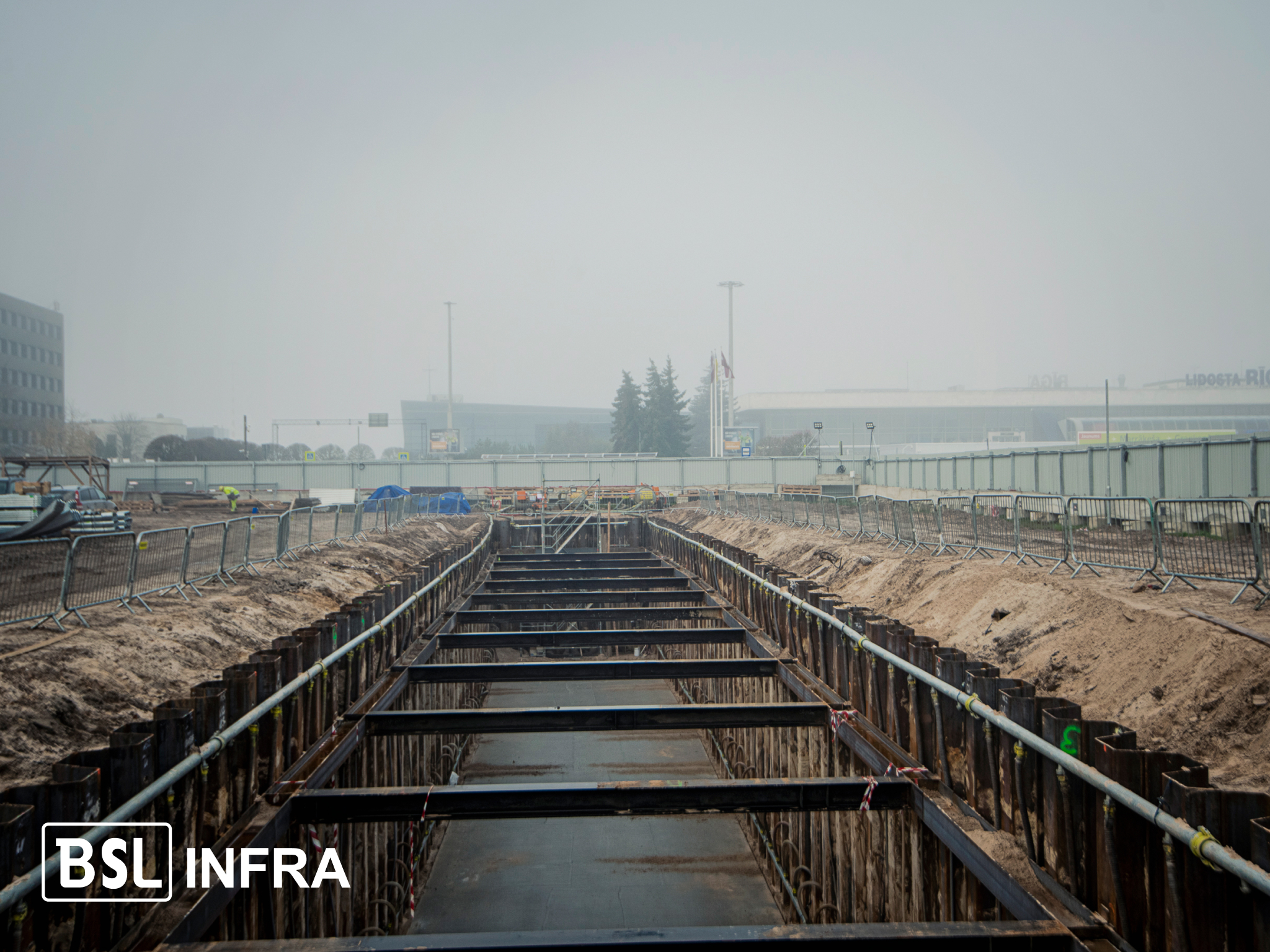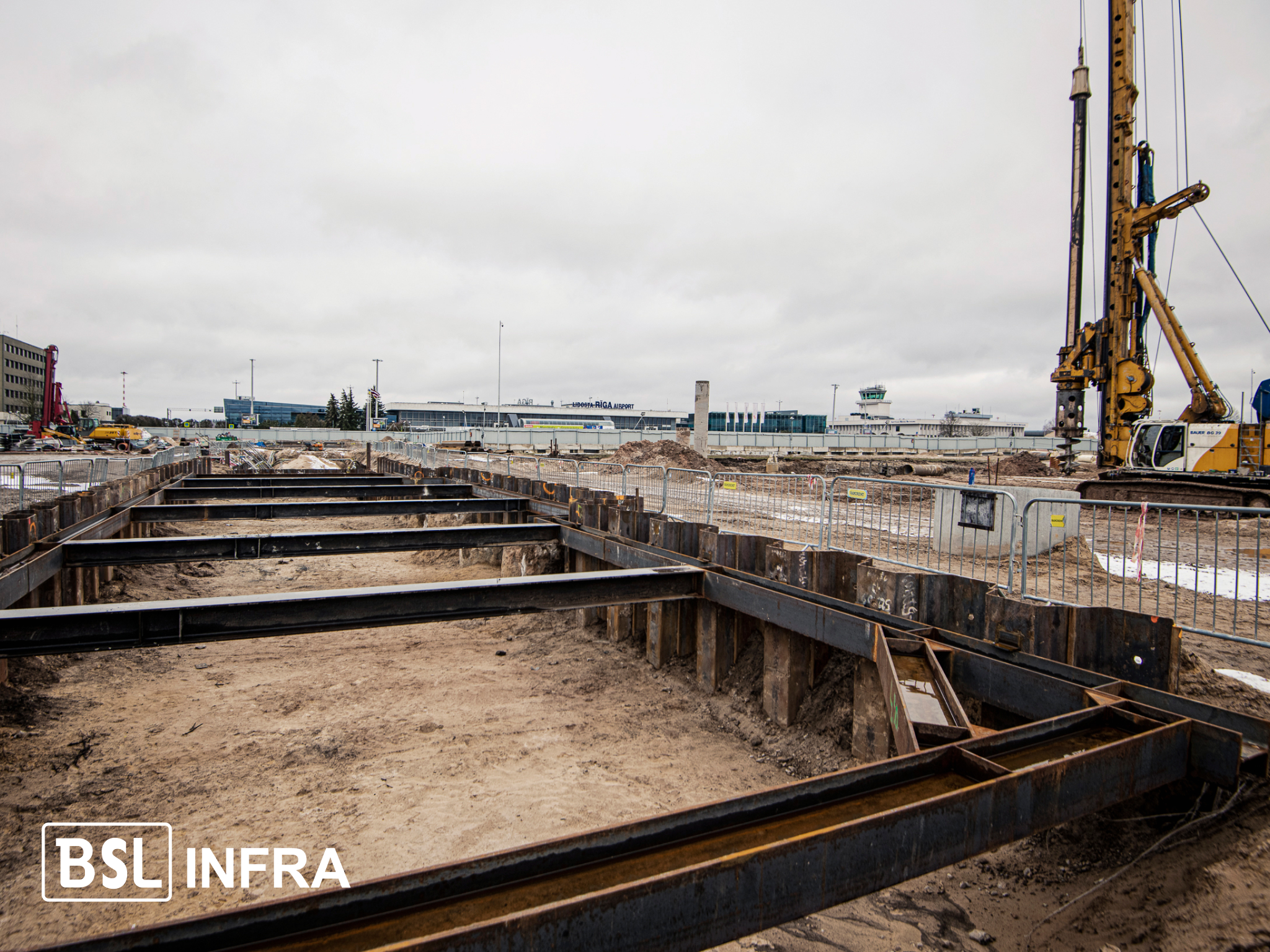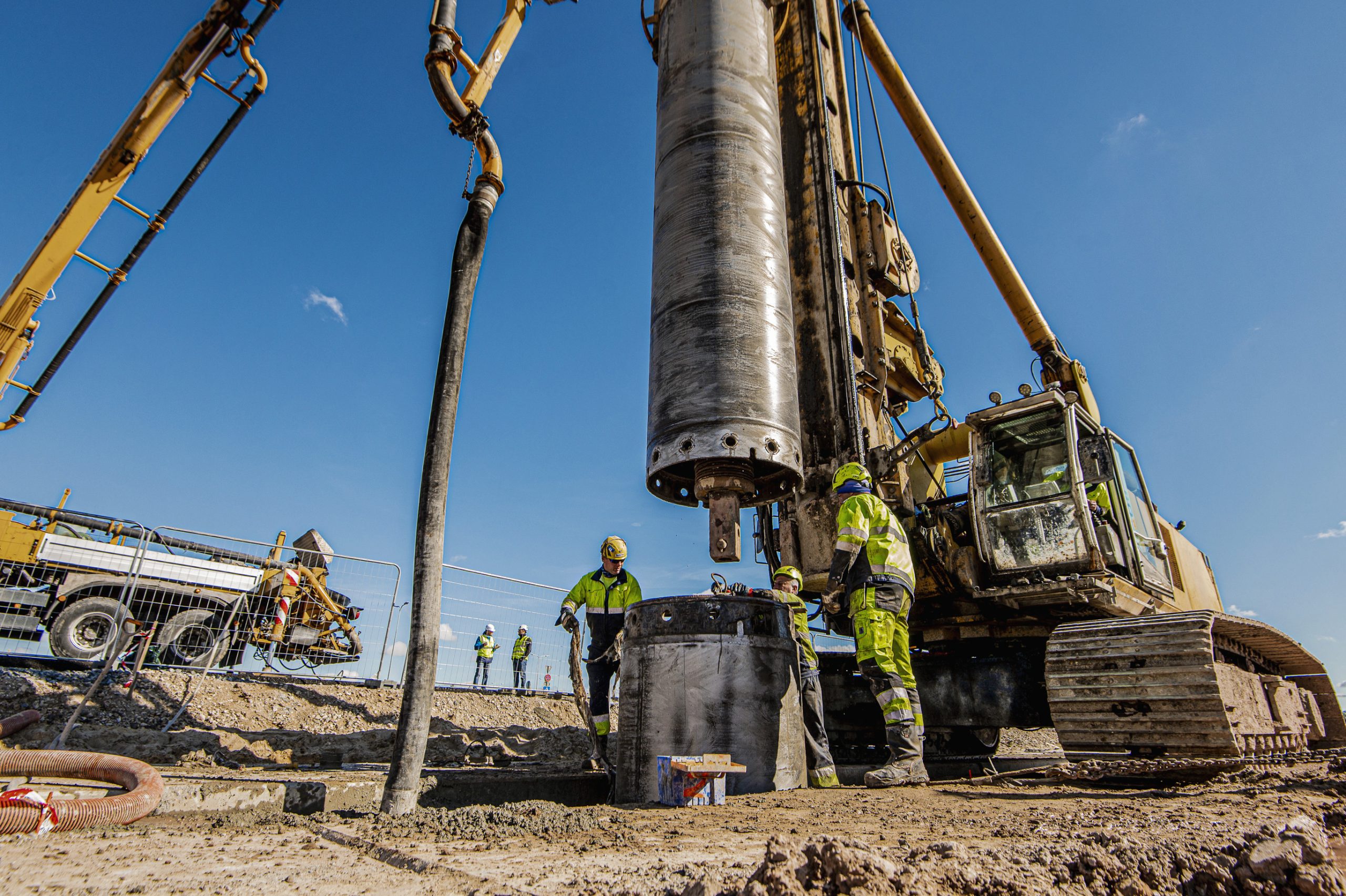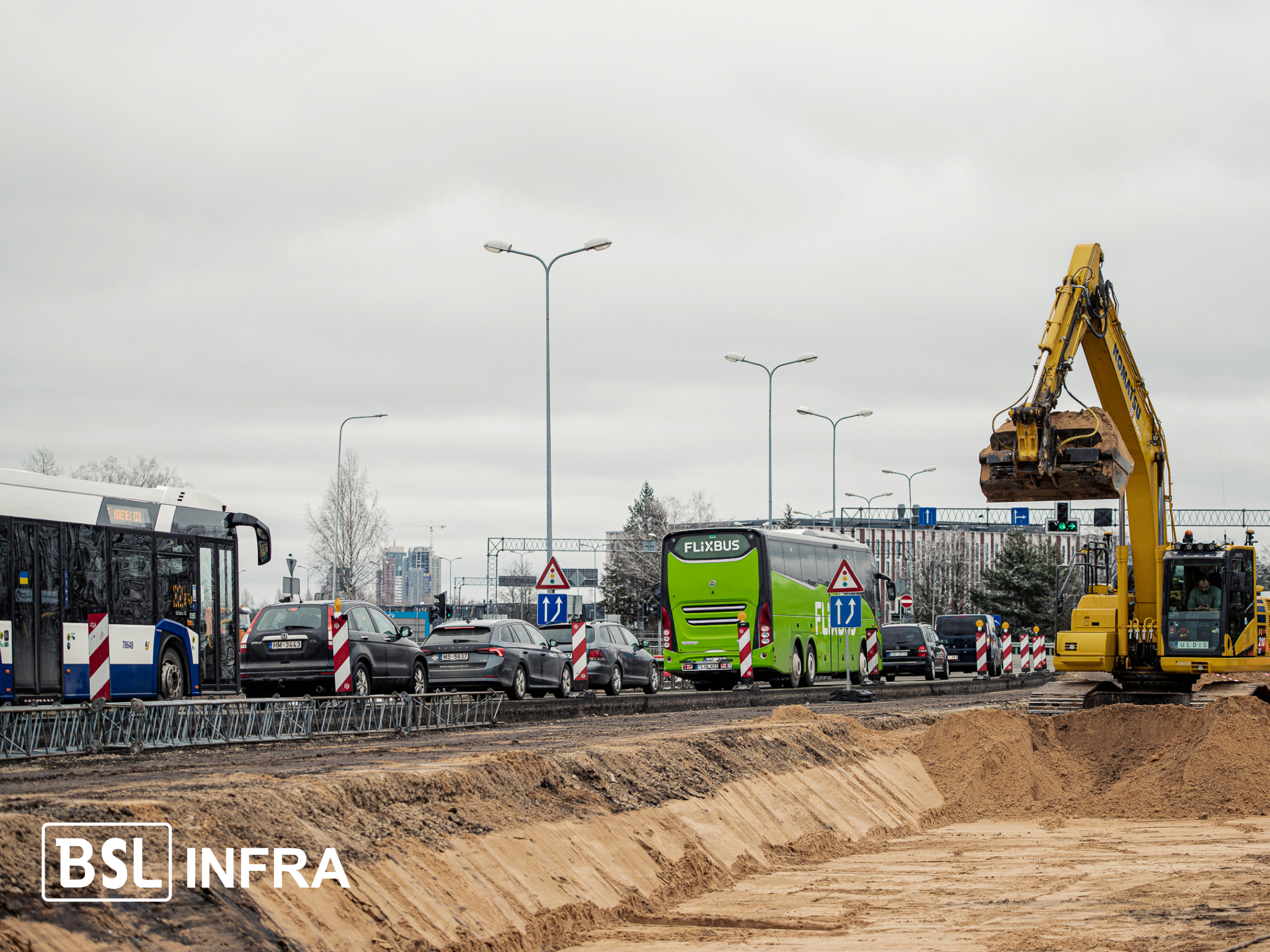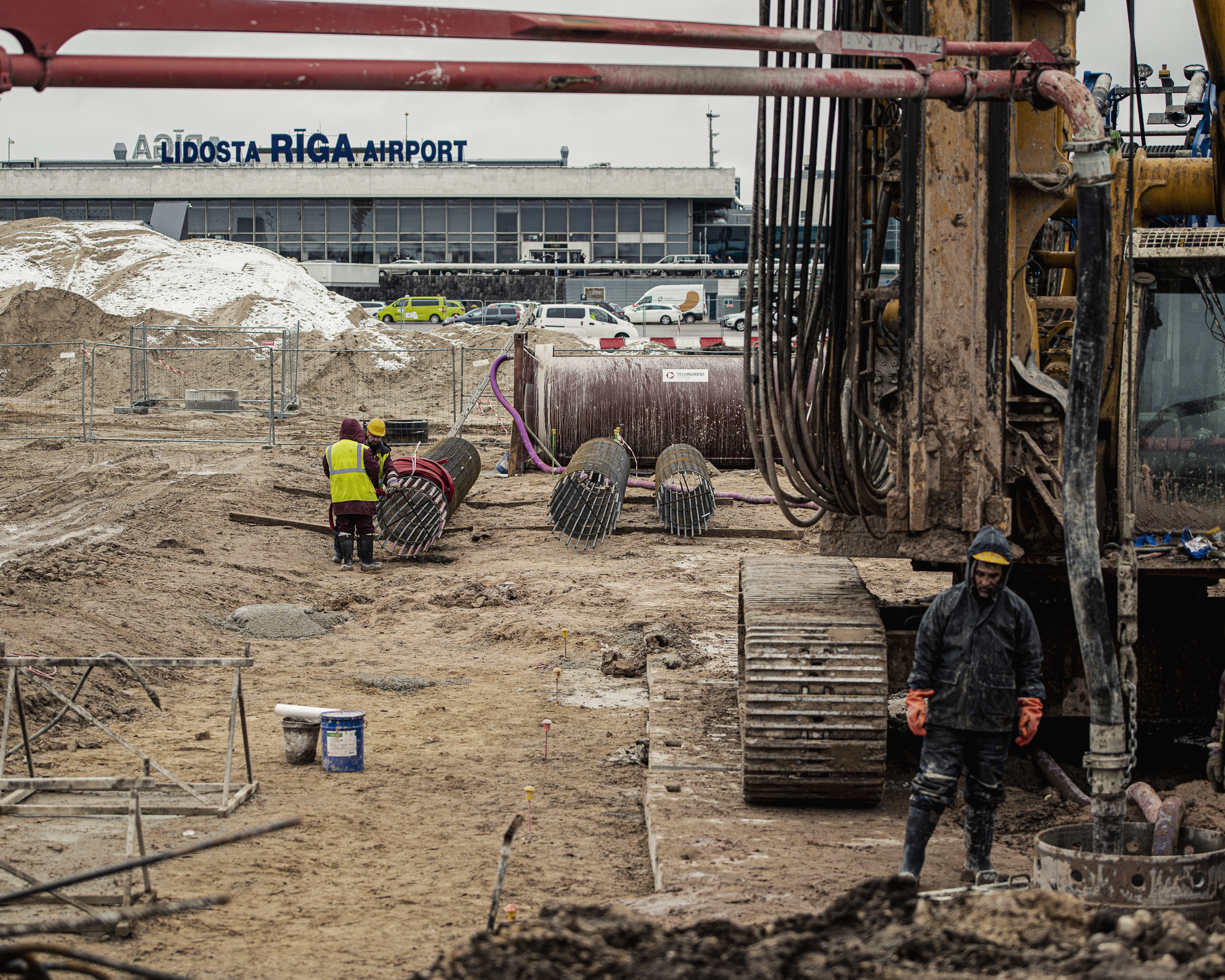Currently, active construction work is taking place on the Rail Baltica international passenger terminal and related infrastructure at Riga International Airport. This includes the construction of reinforced concrete structures for the station building, foundations for the railway platforms, and the development of access roads. This will be the first high-speed rail and air traffic connection center in the Baltic region.
“The direct air and rail connection will be of significant benefit to Latvia, with its positive impact on transport, passenger, and cargo flows evident as soon as the connection is established. Over the long term, we will experience its substantial contribution to the economy and transformative effects on travel habits,” highlights Transport Minister of Latvia Jānis Vitenbergs.
“Good progress has been made in the construction of Rail Baltica in Latvia, both at the international stations and in the ongoing design work for related infrastructure objects, and the contribution of all involved partners is highly appreciated,” explains Kaspars Vingris, Chairman of the Board of Eiropas Dzelzceļa līnijas. “Our main task as the client at the moment is to ensure the integration of this infrastructure into the joint transportation network on a unified railway track.”
Airport visitors have already noticed changes when traveling to the airport, and upon completion of the construction of the Rail Baltica station and infrastructure, several wider access roads will provide easier access to both the airport and the city of Riga. In the future, traffic in both directions, connecting the center of Riga with the airport, will be organized via two new roads, creating circular movement.
Currently, one of the most significant infrastructure construction works has been completed in terms of volume – the construction of the railway station building and the installation of 534 piles for the adjacent platforms. These piles are unique because they are required by the railway infrastructure to withstand heavy loads and are designed to accommodate the train’s maximum permissible speed of 120 km/h. As a result, the piles are larger than usual, with a diameter of 1180 mm and a depth of 33 meters for the platforms, while the piles for the station building’s foundation have a diameter of 1000 mm and a depth of up to 30 meters. Taking into consideration the well-being of visitors, employees, and individuals working near Riga Airport, drilling technology was used instead of pile driving on the construction site.
The construction of the baggage transportation tunnel, which will connect the Rail Baltica railway station with the new terminal of Riga Airport, is also nearing completion. Passengers’ luggage will be safely transported in both directions through the tunnel using a conveyor system, thus linking the railway and air traffic. This marks the completion of the first phase out of five, with planned sequential work to ensure uninterrupted airport operations throughout the construction period. It is worth noting that the construction of engineering communication networks is underway across the construction site, with a total length already exceeding 40 km.
Currently, most of the work is focused on underground structures and communication networks. However, in the future, as the construction of the station building’s framework, platforms, and passenger platforms commences, the outlines of above-ground structures will also become visible. A significant amount of work is involved in constructing the future parking lot and reconstructing the airport access roads. In the next phase, the construction of railway platforms will take place from the future station, both towards Imanta suburb, extending to the aviation hangars, and towards Jaunmārupe suburb. Throughout the project, a 4.5 km high-speed railway line will be built, encompassing the platform, embankment, and high-speed railway stations at multiple levels, providing multifunctional infrastructure that meets the requirements of passenger comfort.
The international Rail Baltica railway station at Riga Airport will serve as the first high-speed railway and air traffic connection hub in the Baltics. A modern, multifunctional passenger service complex will be established, seamlessly integrated with the airport infrastructure, offering passengers new mobility options and enhanced convenience.
Upon completion of the new terminal construction, a pedestrian bridge and square will connect the Rail Baltica railway station and the airport. Airport passengers will have access not only to the international high-speed train, which is scheduled to operate four times a day but also to regularly running regional commuter trains. The construction of Rail Baltica in Latvia involves a phased approach, gradually initiating the operation of the railway line. The project is scheduled for completion in 2030.
Video (visualization): Rail Baltica station at Riga International Airport
The construction of the Rail Baltica station and its related infrastructure at Riga Airport is being undertaken by the international consortium B.S.L. Infra, comprising the Austrian company Swietelsky AG and the Latvian construction companies SIA Binders and AS LNK Industries.

